French multipurpose fighter Dassault Rafale
In 1983, Dassault developed the Avion de Combat Experimentale (ACX) experimental combat aircraft as part of the national program. France from the EFA project came out due to the fact that its armed forces, and especially the navy, wanted to get a compact and light machine, the mass of which was about 8 thousand kg. The demonstration prototype ACX weighing 9,5 thousand kg was brought at that time. For the first time, he took to the 4 July 1986 in the air and helped to check the aerodynamic configuration, characteristics, configuration, remote control system, as well as the design with extensive use of composite materials for the Avion de Combat Tactique project.
Later, ACX was renamed Rafale A. Initially, it was equipped with two dual-circuit turbojet engines General Electric F404-GE-400. After the 460 test flights, which included landing on the deck of the Clemenceau aircraft carrier (touch and go-around), one engine (left) was replaced by the SNECMA M88-2, which was designed specifically for the Rafale.
The Rafale fighter was made according to the “duck” scheme, it has a mid-winged delta wing, with a high-lying forward horizontal tail. The wing is equipped with two-section slats and single-section elevons.
The main material for the wing are carbon plastics. The tips of the consoles and the radome of the wing and fuselage are made of Kevlar - slats of titanium alloys. 50% fuselage made of carbon fiber; Aluminum-lithium alloys are used for side trim panels. In total, in the construction of the Rafale airframe, the share of composites is 20% by area and 25% by weight. As a result, the weight of the airframe decreased by 300 kilogram.
For the French naval forces, the deck version of the fighter was designated Rafale M. It is distinguished by a reinforced chassis and airframe, a brake hook under the tail section of the fuselage, a built-in retractable ladder and so on. At the end of the keel, the Telemir system is installed, which provides data exchange between the aircraft carrier’s navigation equipment and the aircraft’s navigation system. The Rafale M fighter as a result of all the improvements became heavier than the Rafale C on 500 kg.
Rafale aircraft are equipped with a chassis manufactured by Messier-Dowty. On the Rafale aircraft of modifications C and B, the main pillars have pneumatics one each, and the front pylons have two pneumatics. On the deck of the Rafale M, the front support is self-guided. When towing, it turns almost 360 degrees.
On Rafale fighters, all the props are removed forward. All wheels are equipped with carbon brakes manufactured by Messier-Bugatti.
On single Rafale C and M cabin equipped with ejection seat Martin-Baker Mk.16, which ensures the safe escape of the aircraft on the ground when parked. The lantern opens to the right side swiveled to the side. In the control cabin on the dashboard there are three digital liquid crystal multifunction displays. In the center is a tactical display that serves to display flight information and information obtained from various sensors. On the sides are displays showing information on the operation of engines, hydraulic, fuel, oxygen and electrical systems, as well as other equipment.
The power plant of the Rafale is two Snecma М88-2Е4 two-circuit turbojet engines. Each 4970 kgf (in the afterburner mode - 7445 kgf). For Snecma, developing the M88 engine was quite a challenge. The customer needed an engine capable of reliably operating in a maneuverable air battle and during a high-speed breakthrough of the air defense system at low altitude. Those. Requirements provided for a long life, low fuel consumption in various flight modes and a high thrust-to-weight ratio Snecma chose the twin-shaft engine, which was later to be the ancestor of the third-generation engines of French production.
Officially, the M88 engine development program began in 1986. In February, 1989, the first bench test of the engine took place, and in February, 1990, flight tests were started at the demonstration Rafale A. The final certification occurred in 1996.
To obtain a high performance engine, developers used various advanced technologies in engine design. For example, compressor disks were made monolithically with blades, single-crystal blades were used in the construction of a high-pressure turbine, and powder technology was used to manufacture turbine disks. The engine design used ceramic coatings, low-emission combustion chamber and composite materials. The creators of the turbofans were tasked with ensuring the lowest possible thermal visibility of the fighter and reducing smoke, in order to reduce visual visibility.
When creating the engine was used multi-step approach.
On single-seat fighters Rafale C and M, 5900 liters of fuel are placed in the internal tanks, and on the double Rafale B - 5300 liters. On 5 of 14 external suspension assemblies, it is possible to place outboard fuel tanks of various capacities. On the 4, wing nodes are fitted with fuel tanks with a capacity of 1250 liters, and at the central one - with a capacity of 2000 liters.
The cannon armament of the Rafale 30 mm Nexter DEFA 791B cannon, whose rate of fire is 2500 rounds per minute. Ammunition - 125 armor-piercing incendiary tracer cartridges OPIT with bottom fuse.
Missile armament consists of:
- air-to-air missiles: AIM-9, AIM-132, AIM-120, MICA, Majik II, MBDA Meteor;
- air-to-surface missiles: Apache, Storm Shadow, AM.39, AASM, ASMP with nuclear warhead.
Tests and combat use
The experimental fighter Rafale A made its first flight in July 1986 of the year. The first aircraft in the Rafale C variant (single interceptor fighter) took off in May 1991, and the first deck-based aircraft Rafale M, designed to arm French aircraft carriers, took off in December of the same year. According to the plan of serial production, the French Navy and the French Air Force will supply 86 and 235 aircraft, respectively.
The first combat use of Rafale took place in March 2007 during the NATO operation in Afghanistan. In addition, these aircraft since March 2011, the aircraft used in NATO operations in Libya against the troops of Gaddafi.
The operation of the Rafale has not been without incident.
6 December 2007, the trainer of the Rafale B modification flying from the Saint-Dizier air force base, performed a training flight on 18: 30 crashed near the settlement of Nevick (central France). The cause of the crash was a failure in the electric flight control system. Captain Emmanuel Moruze - the pilot of the plane was killed.
24 September 2009, two fighter aircraft modification Rafale M in 30 kilometers from the city of Perpignan fell as a result of a collision in the Mediterranean. The accident occurred in 18: 10, during the return of the machines to the aircraft carrier Charles de Gaulle. The cause of the catastrophe, according to the Bureau of Investigation of Accidents at the Ministry of Defense, was the human factor. The pilot of one fighter, captain of the second rank, Francois Duflo, was killed. Pilot of the second, third-rank captain Jean Bofile catapulted.
November 28 The 2010 fighter of the Rafale M modification, returning to Charles de Gaulle, fell into the Arabian Sea after completing its combat mission to support the coalition forces in Afghanistan. The accident happened in 100 kilometers off the coast of Pakistan. The cause was a technical malfunction. Catapulted the pilot picked up a rescue helicopter.
2 July 2012, the French carrier-based fighter Rafale crashed during exercises. The incident occurred in the Mediterranean with a machine based on Charles de Gaulle. The pilot ejected and was picked up by an American helicopter. In the Mediterranean, carried out joint exercises of the French and American aircraft carriers.
Rafale is in service with the French Air Force and Navy.
Air Force took over the aircraft in 2006 year. As of 2012, the year 38 machines of the Rafale B modification and 37 machines of the Rafale C. are accepted.
The Navy adopted the Rafale M in 2004 year. As of 2012 year, there were 36 aircraft.
In addition, Rafale won the Indian tender, participated in tenders for the supply of fighter jets to Brazil and the United Arab Emirates. 31 January 2012 of the Year Rafale Wins MMRCA International Tender
Modifications:
Rafale A - experimental demonstration Rafale. It was a bit bigger and heavier than the Rafale C / M aircraft. Equipped with a pair of engines F404-GE-400 with thrust 6800 kg (16 thousand pounds), on the basis of their developed engine M88.
Rafale B - double, ground-based. It was ordered as a training version of the Rafale C, while retaining all the functionality.
Rafale C is a multi-purpose ground-based combat aircraft. The original designation of Rafale D, renamed 1990 year. The French Air Force requested 250 machines in single and double versions.
Rafale M is a single-seat multi-purpose carrier-based aircraft. It is similar to the Rafale C, but it is equipped with a landing hook, as well as a modified nasal stance with a variable length. The Navy demanded 86 machines.
Rafale flight performance:
Crew - 1 — 2 man;
The length of the aircraft - 15,3 m;
Height - 5,3 m;
Wingspan - 10,9 m;
Wing area - 45,7 m²;
Empty weight - 10000 kg;
Normal take-off weight - 14710 kg;
Maximum take-off weight - 24500 kg;
Payload mass - 9500 kg;
The mass of fuel - 4700 kg;
The mass of fuel in the outboard fuel engines - 6700 kg;
Engine - 2 two-circuit turbojet SNECMA M88-2 with afterburner;
Dry weight of the engine - 897 kg;
Maximum thrust - 5100 kgf for each engine;
Traction on afterburner - 7500 kgf each engine;
Gas temperature in front of the turbine - 1577 ° C;
Maximum speed - 1,8 Mach (1900 km / h);
The combat radius (in the version of the fighter-interceptor) - 1093 km;
Combat radius - 1800 km
Practical ceiling - 15240 m;
Rate of climb - 305 m / s.
Based on materials:
http://ru-aviation.livejournal.com
http://worldweapon.ru
http://3mv.ru
http://www.be-and-co.com
http://www.airwar.ru
http://crimso.msk.ru
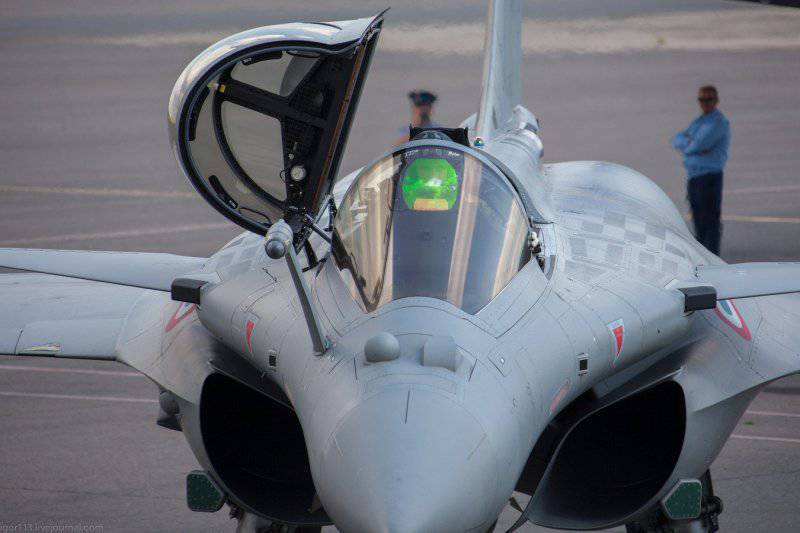
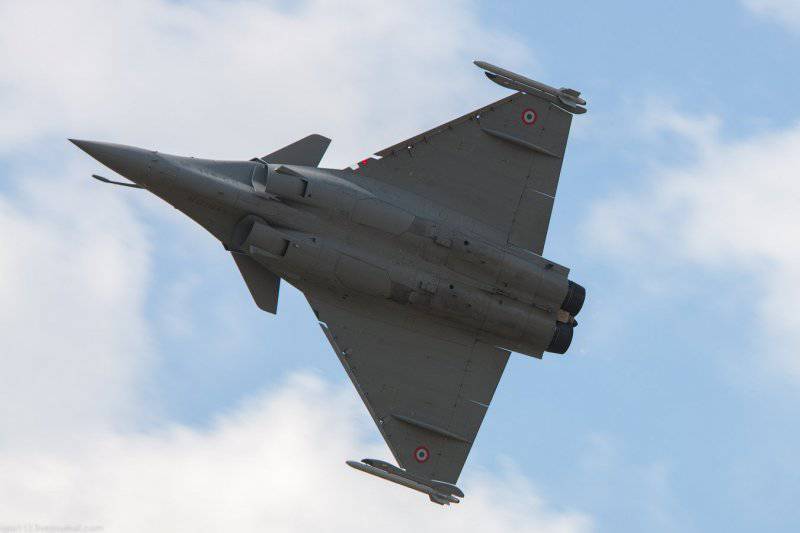
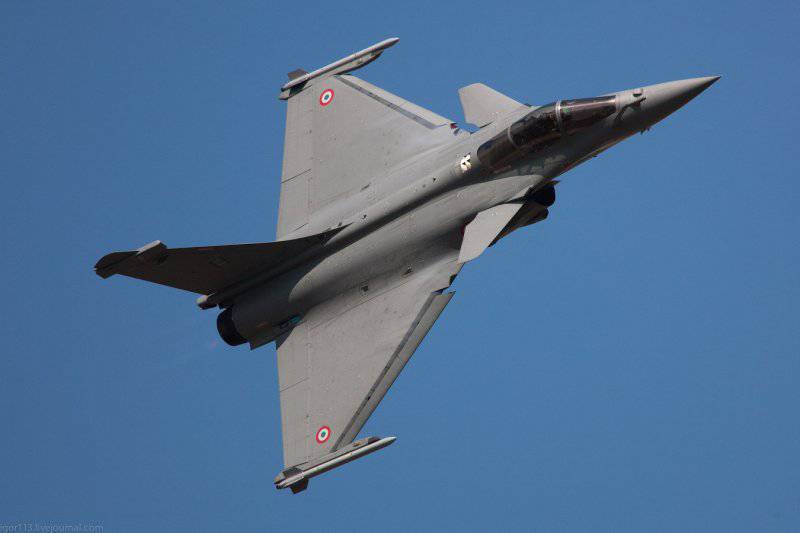
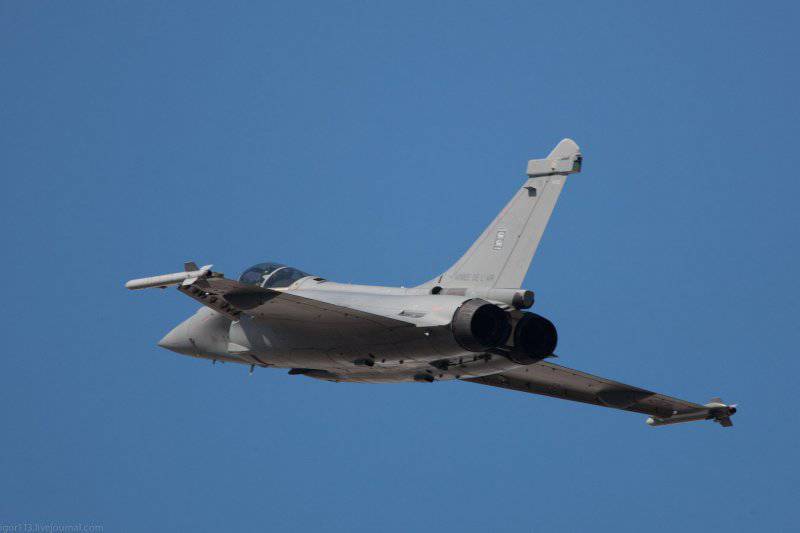
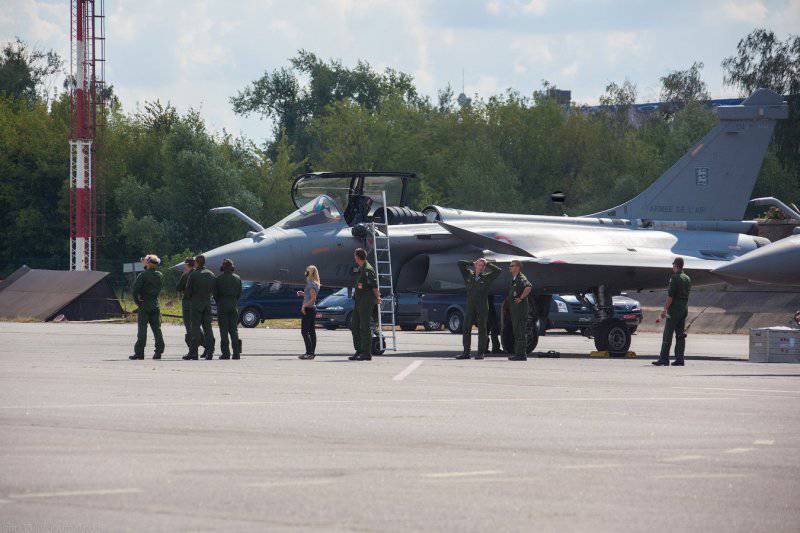
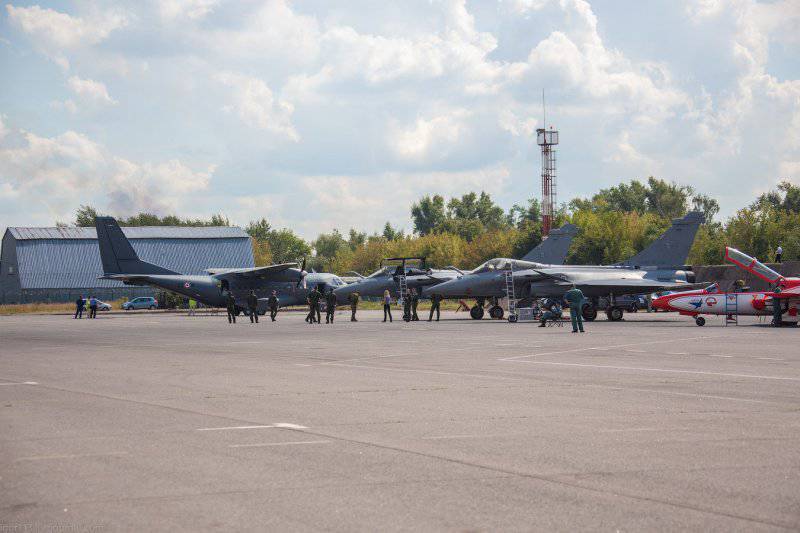
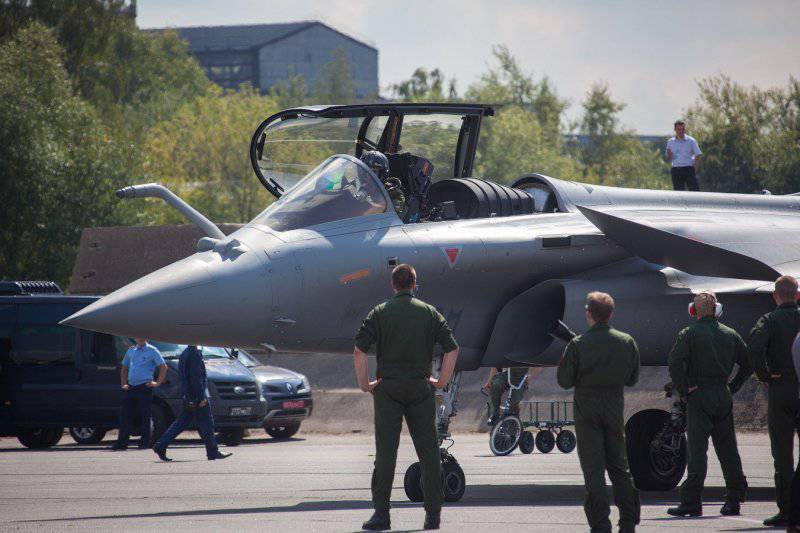
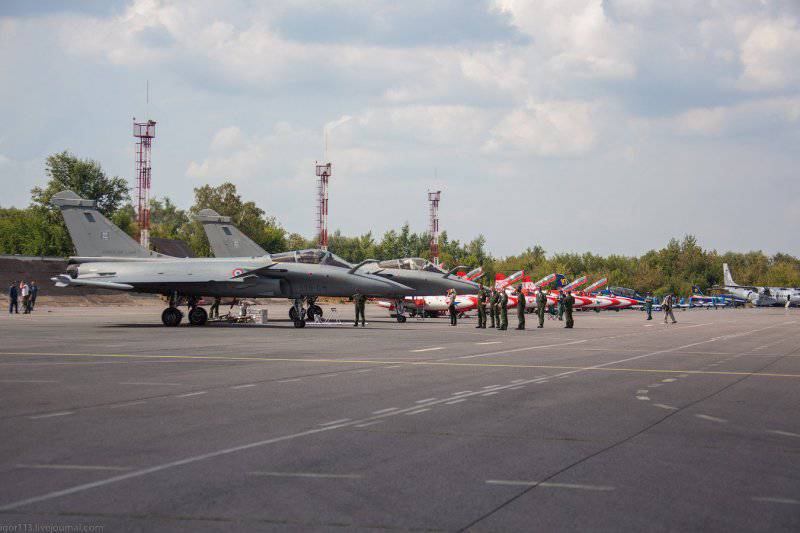
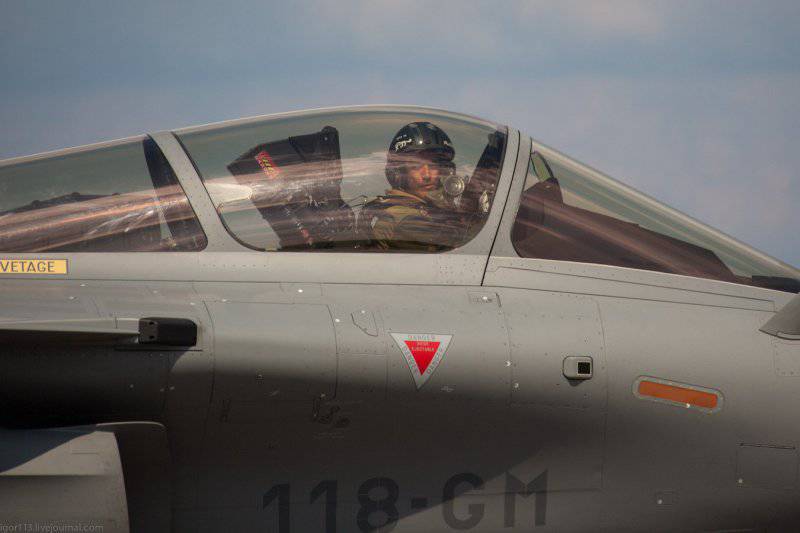
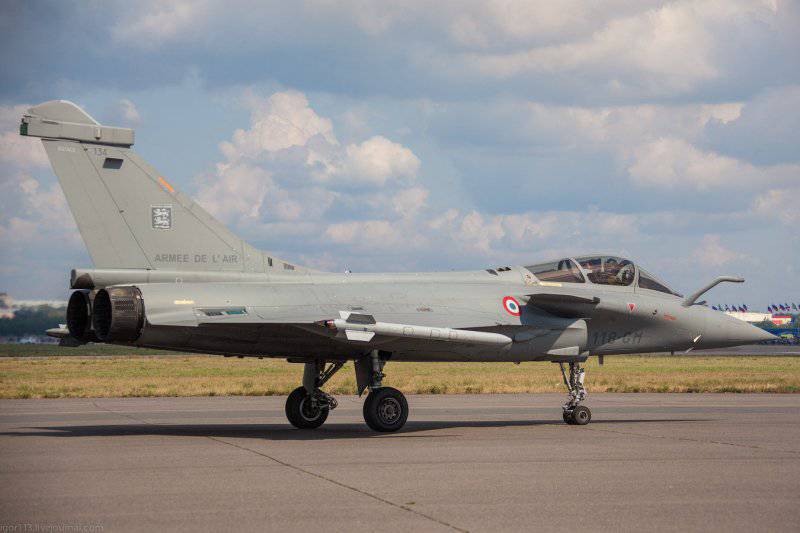

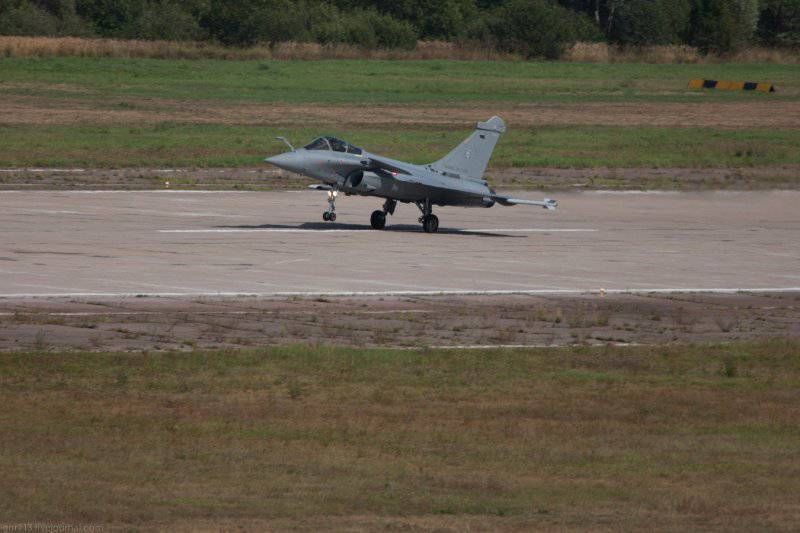
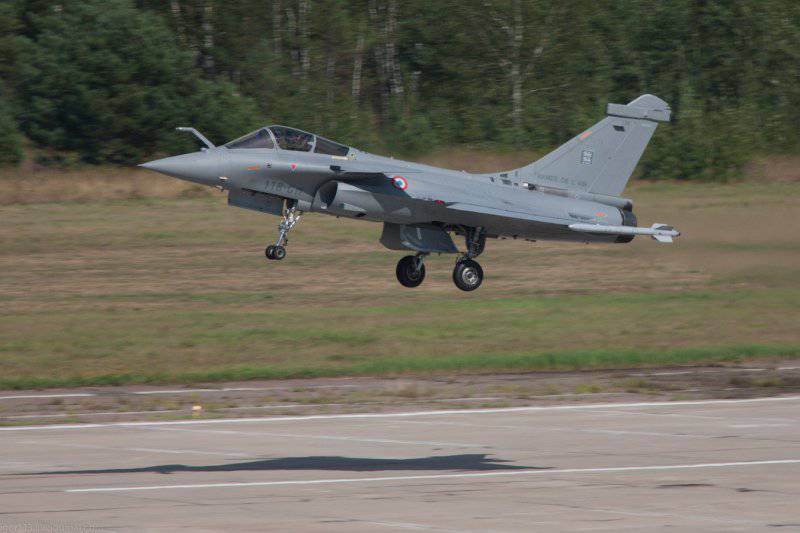
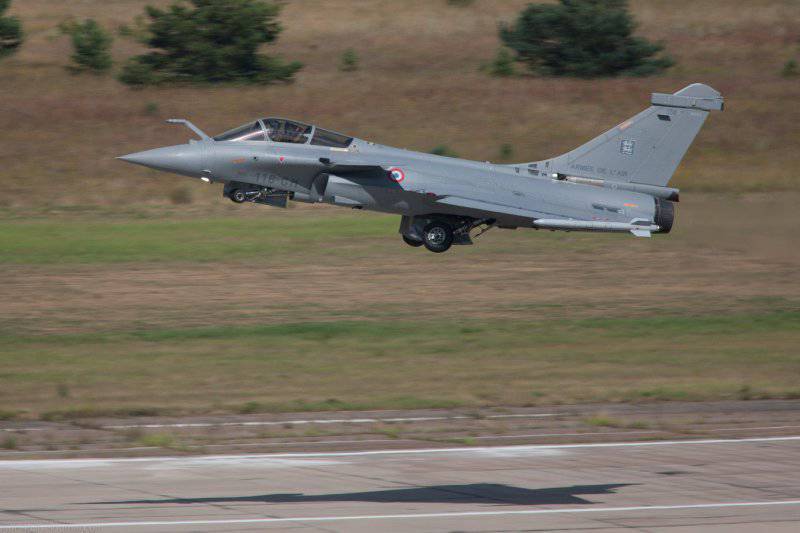
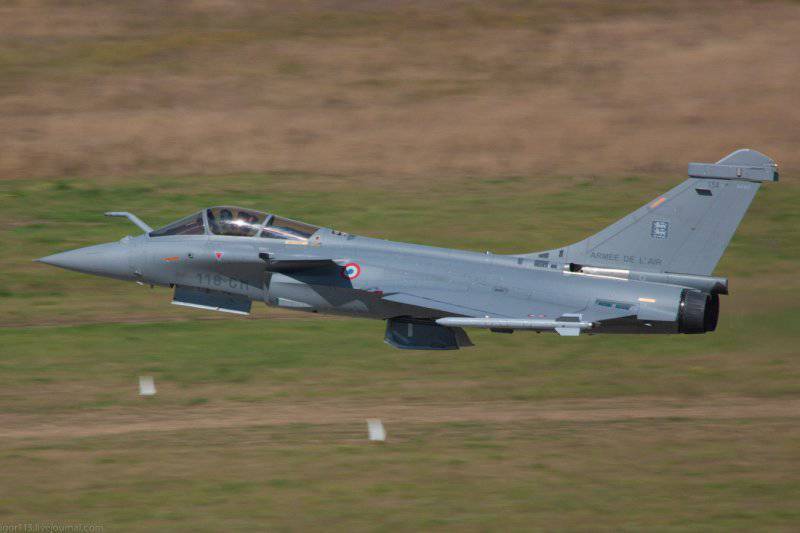
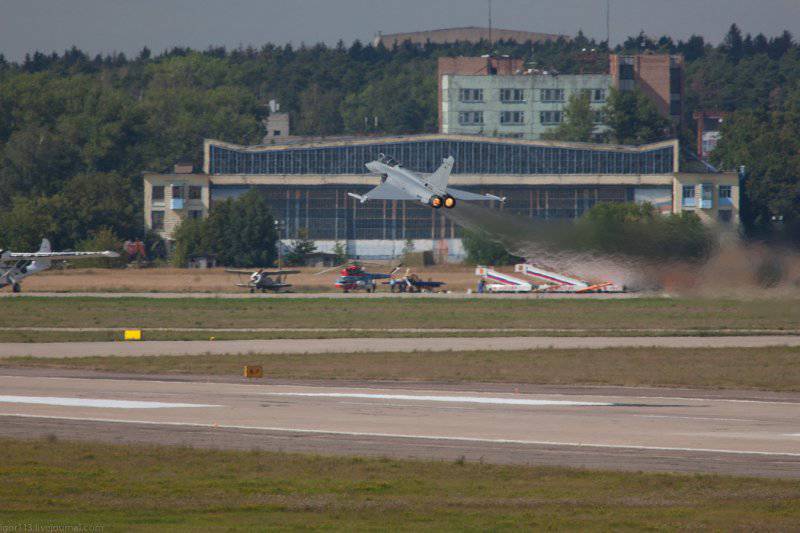

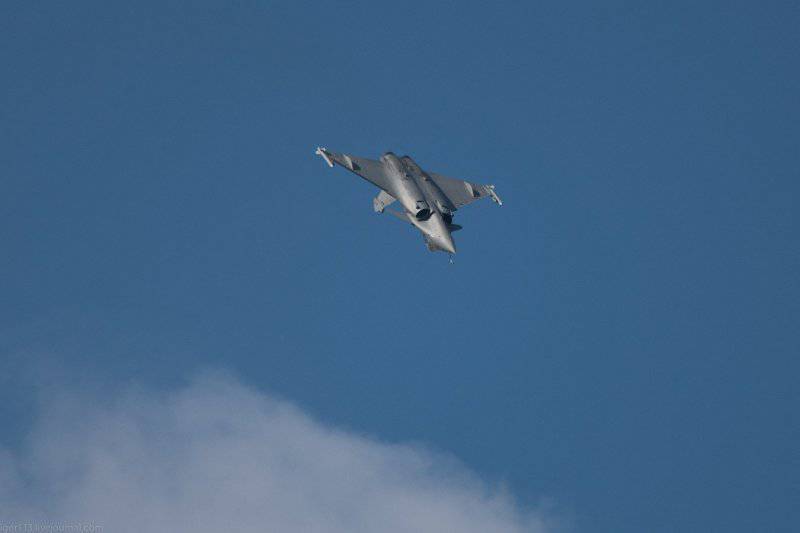
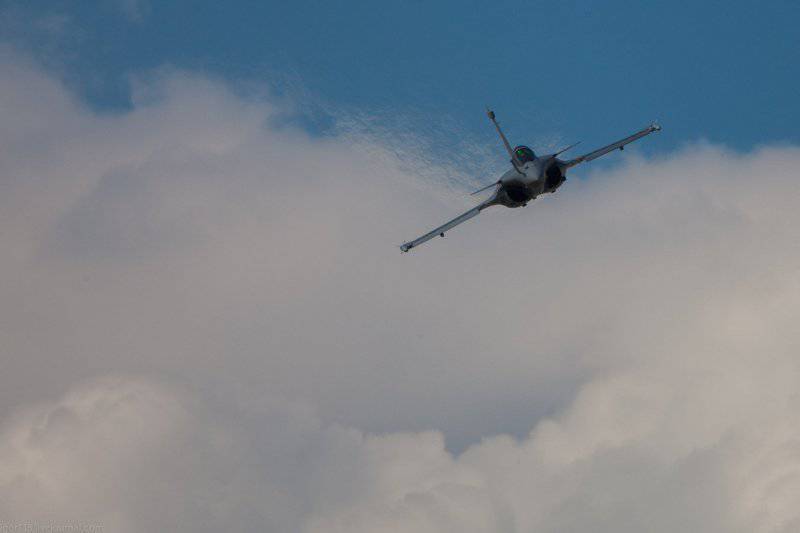
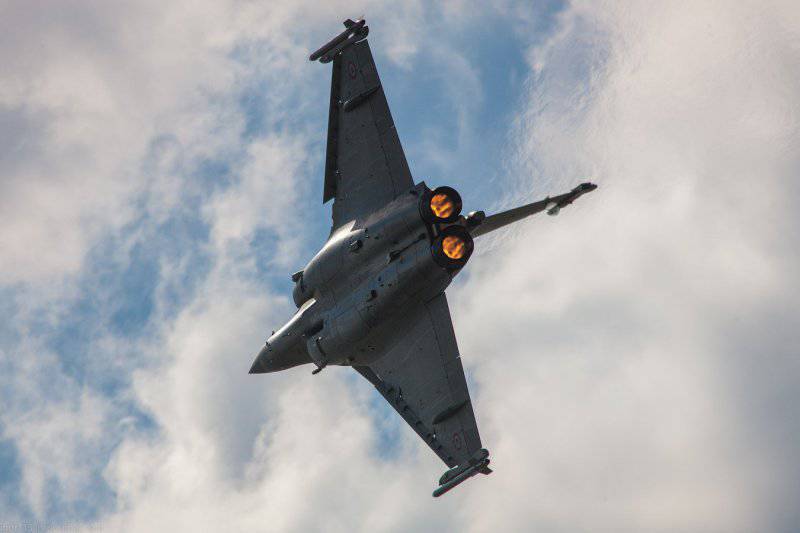
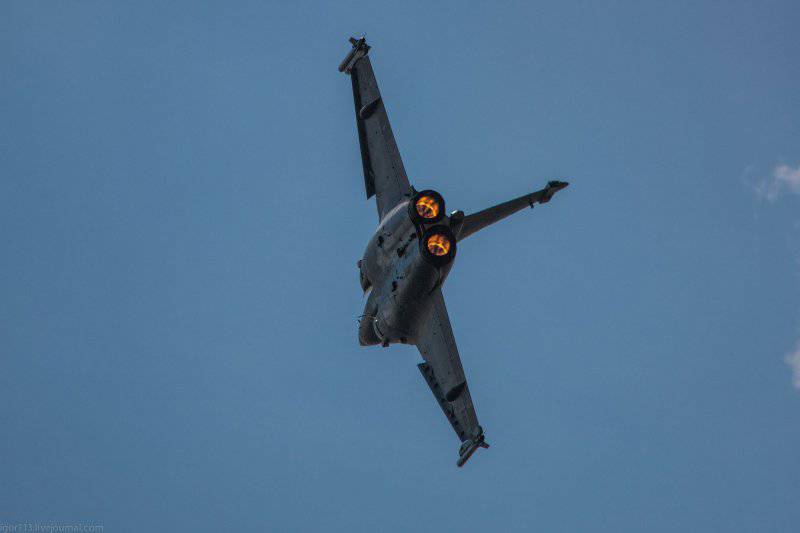
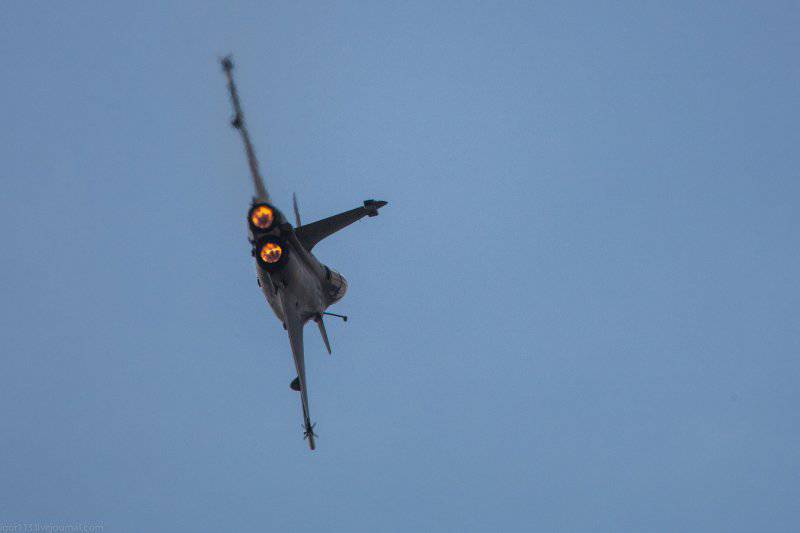
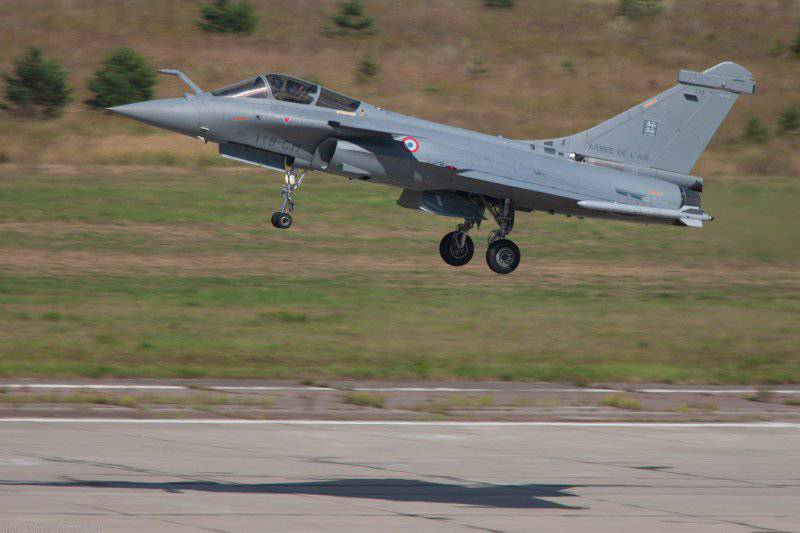
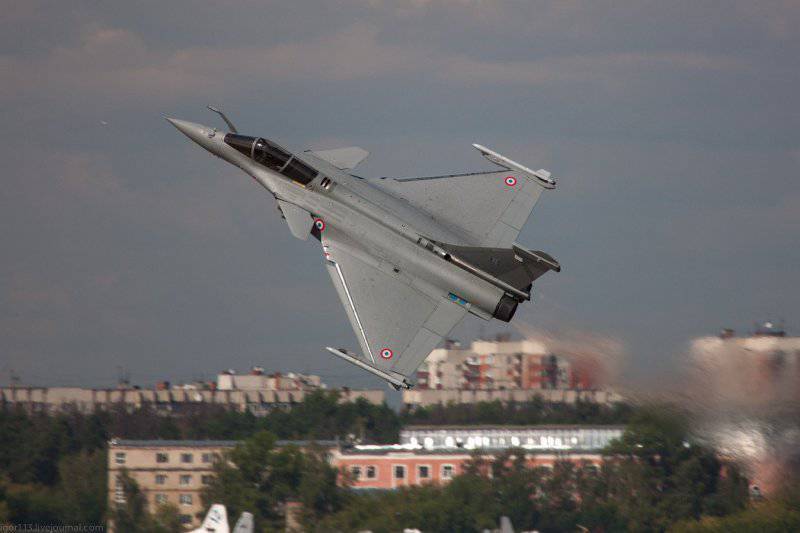
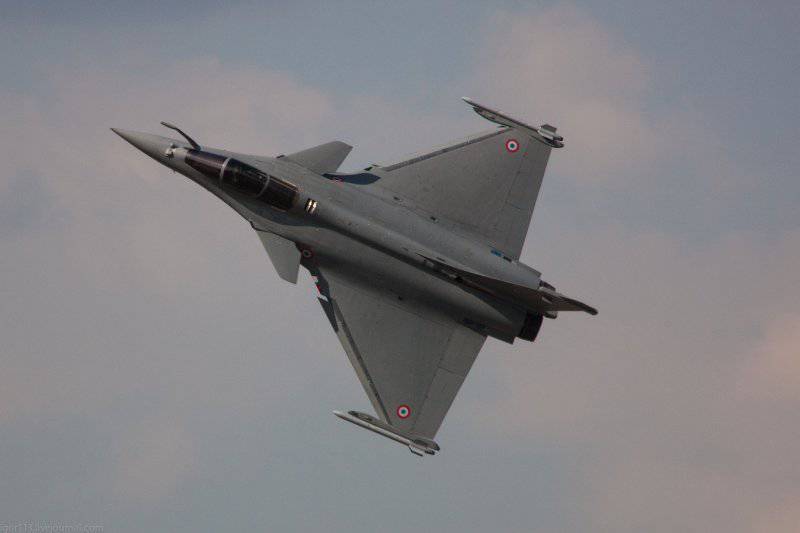
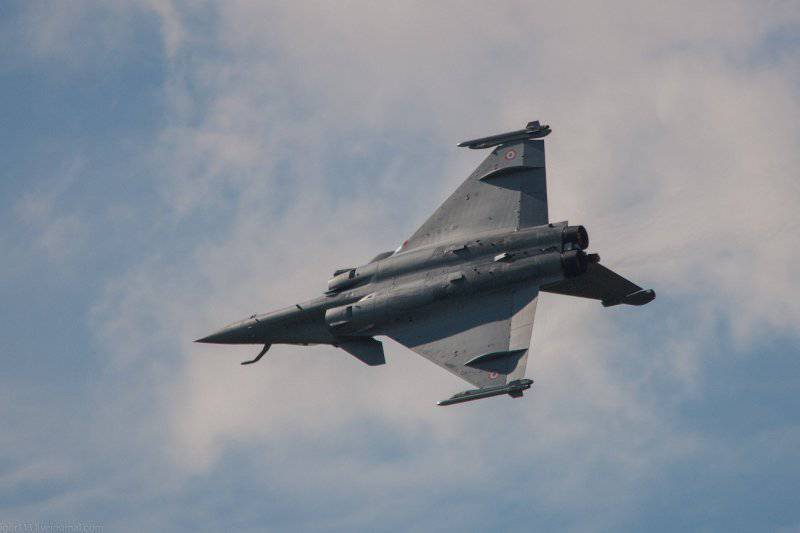
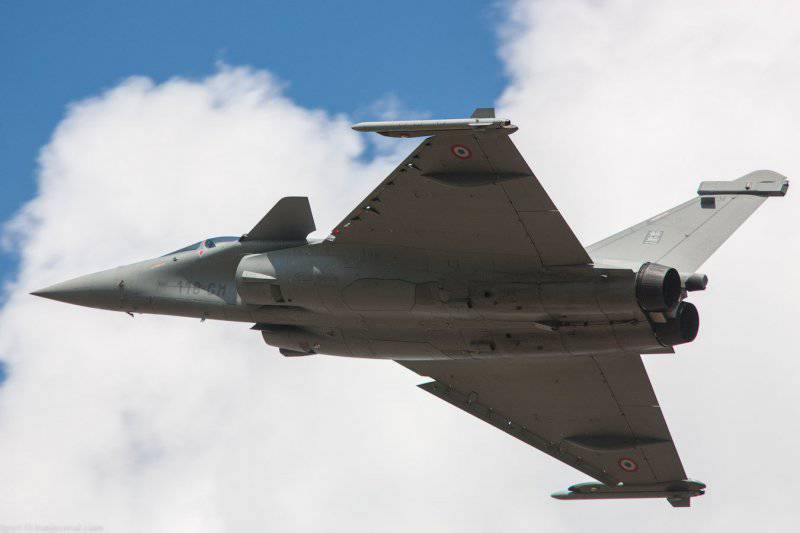
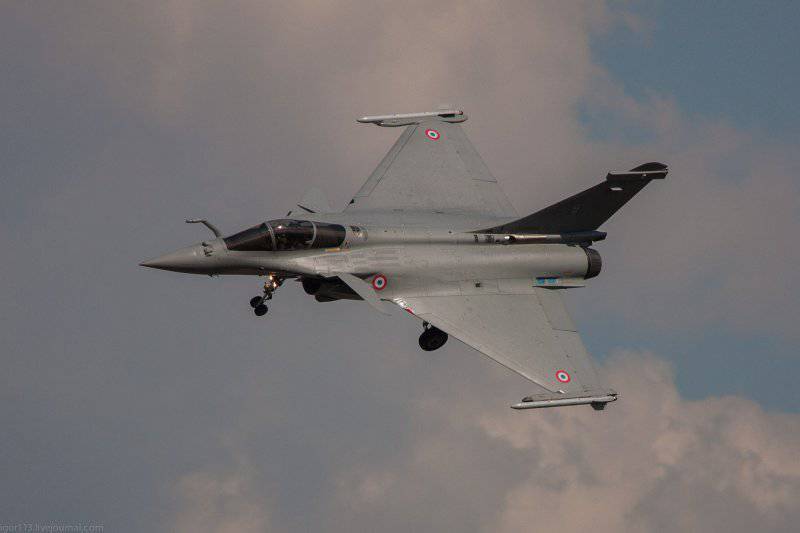
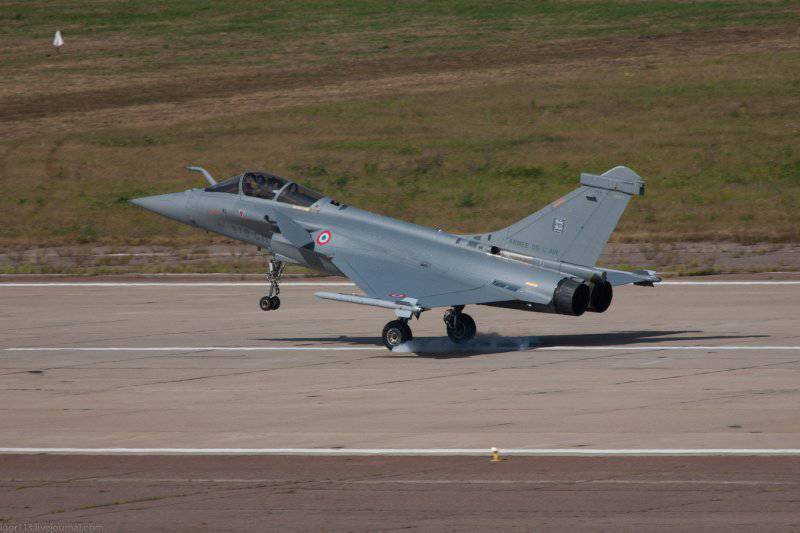
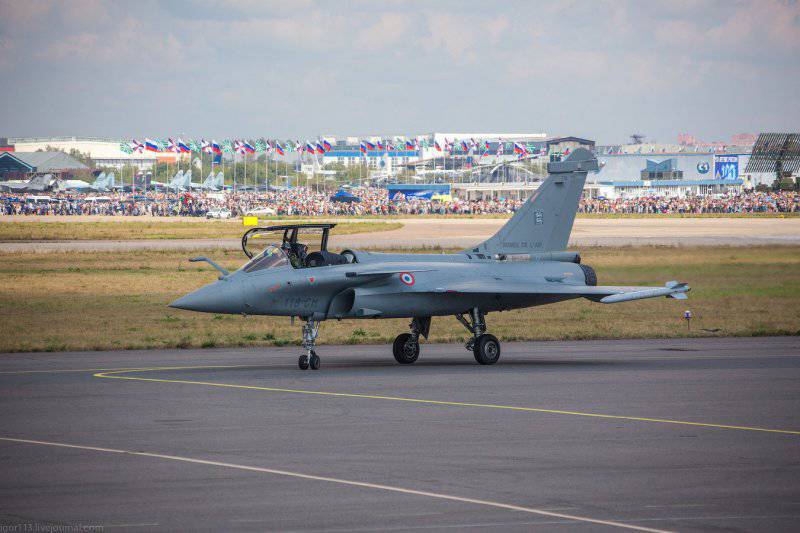
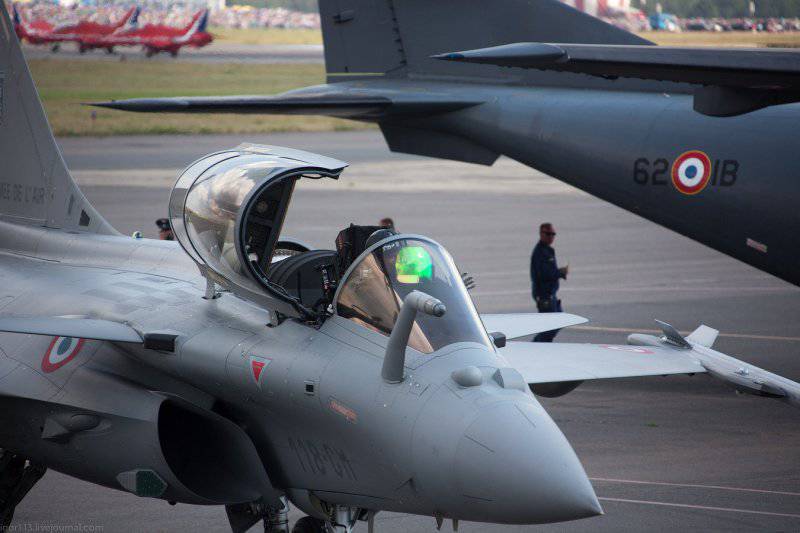
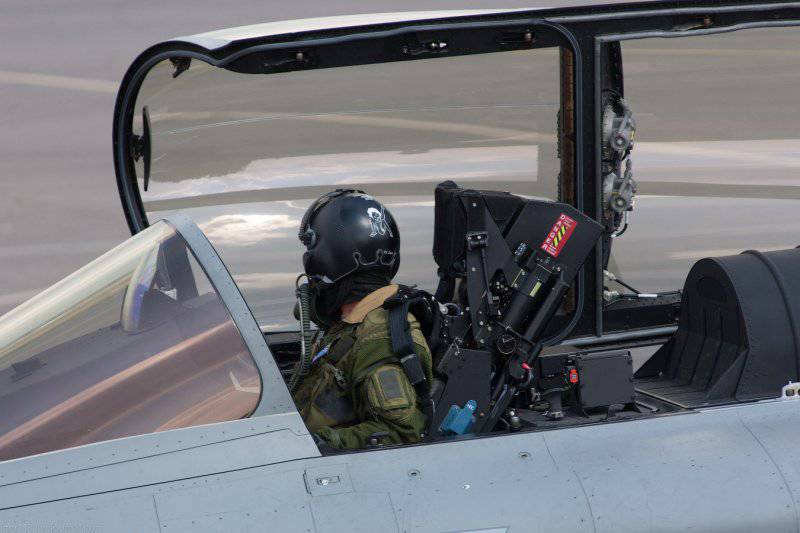
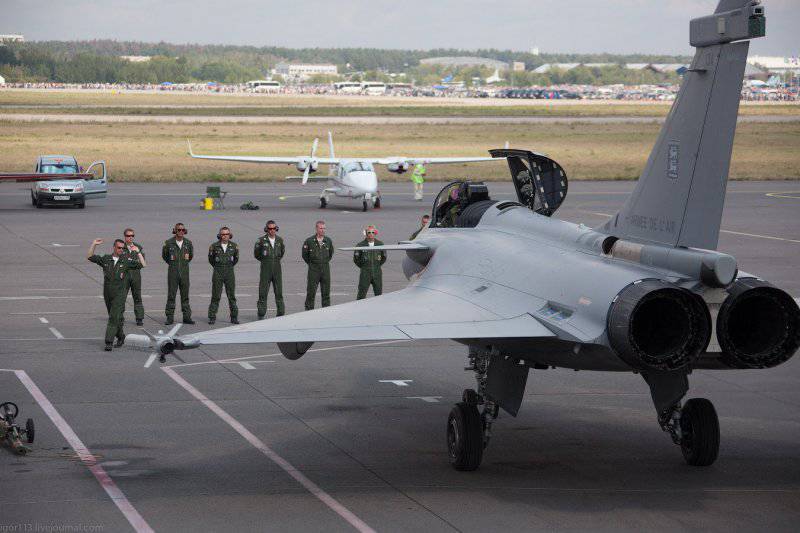
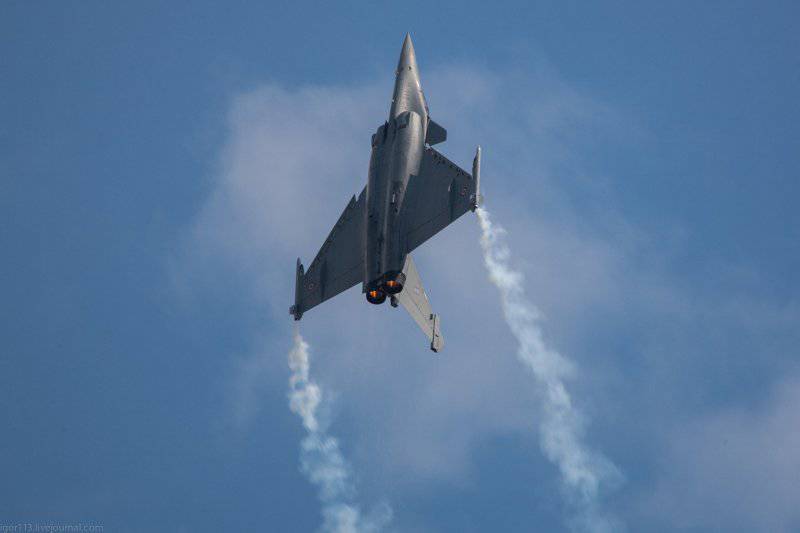
Information